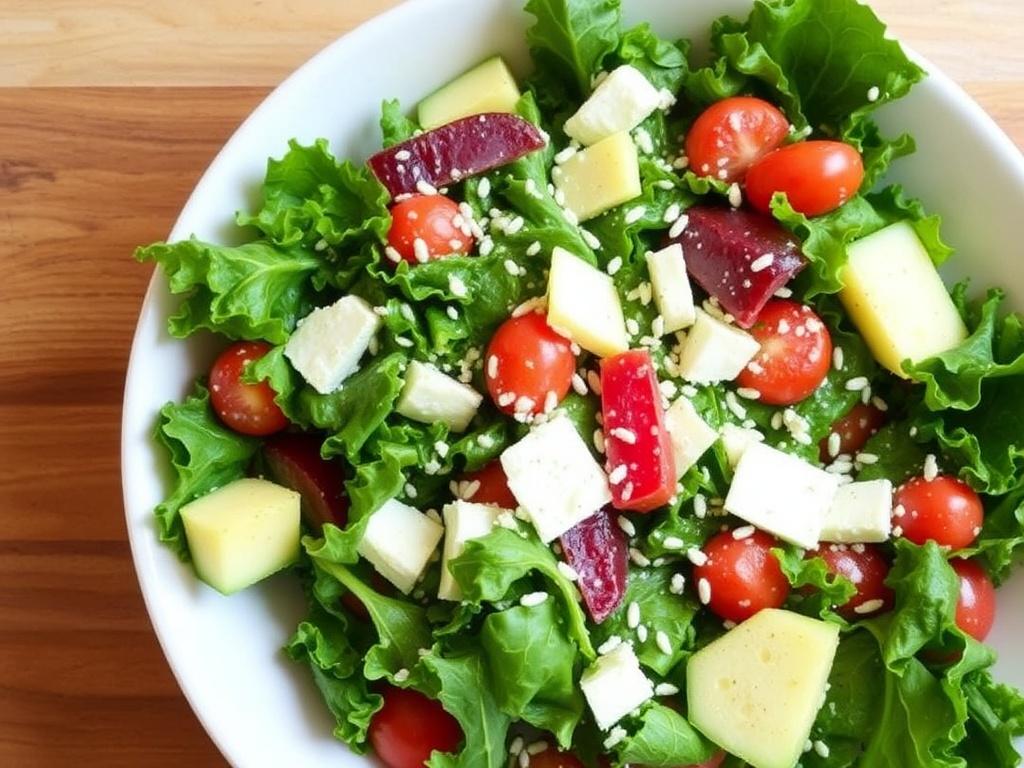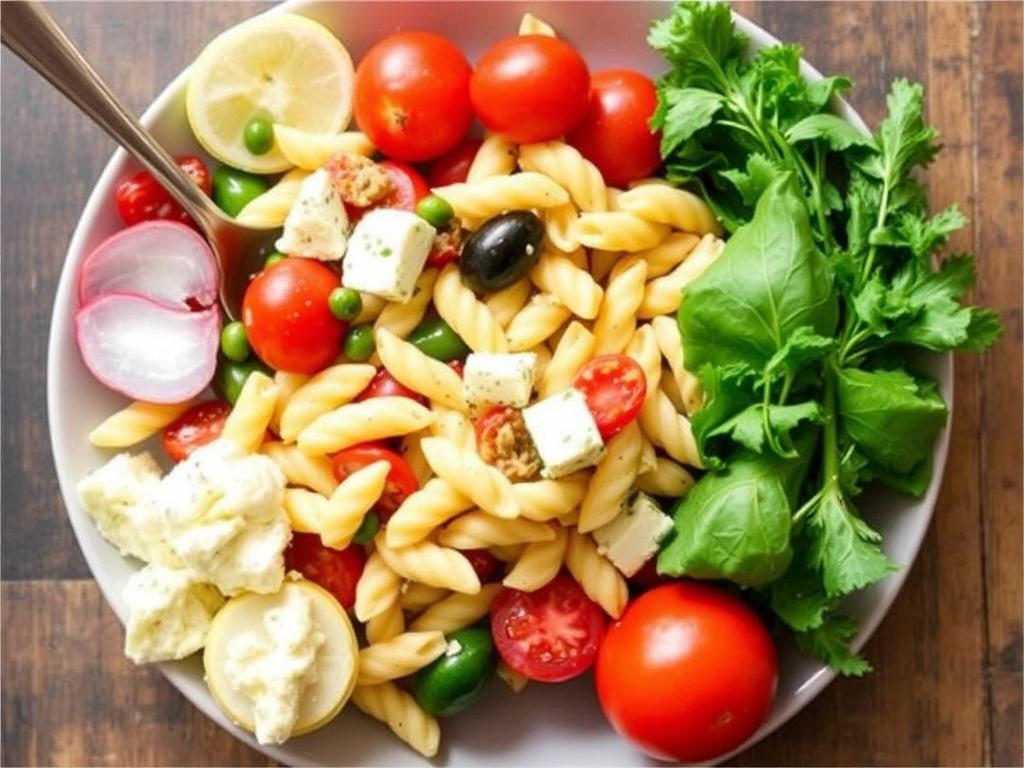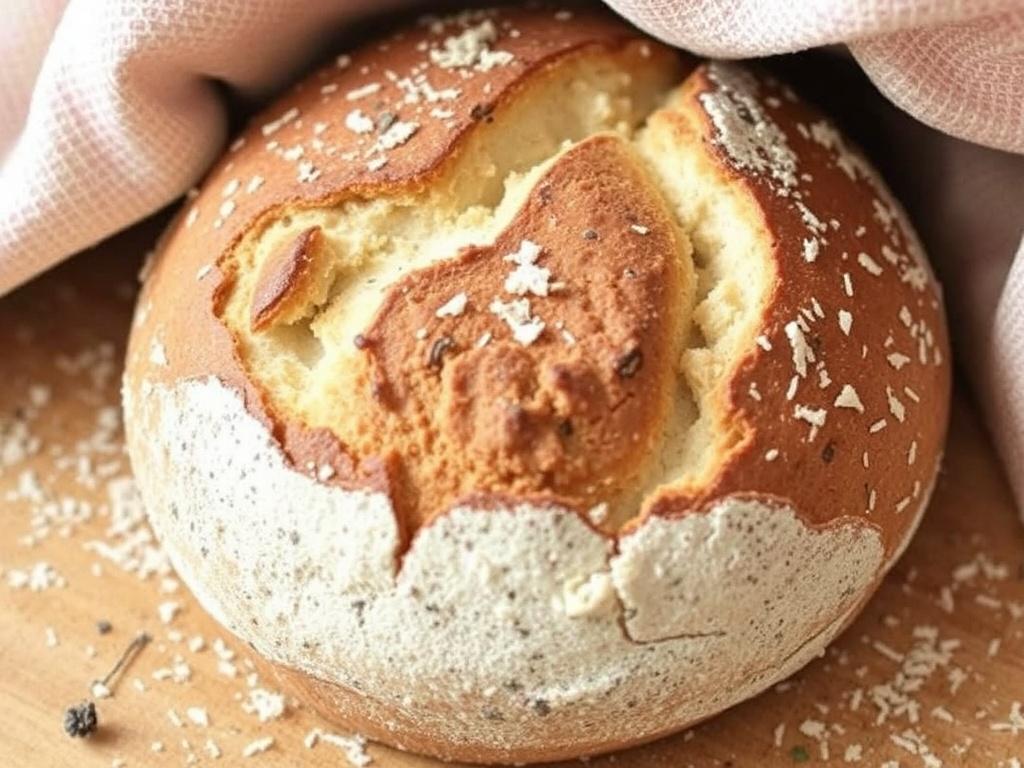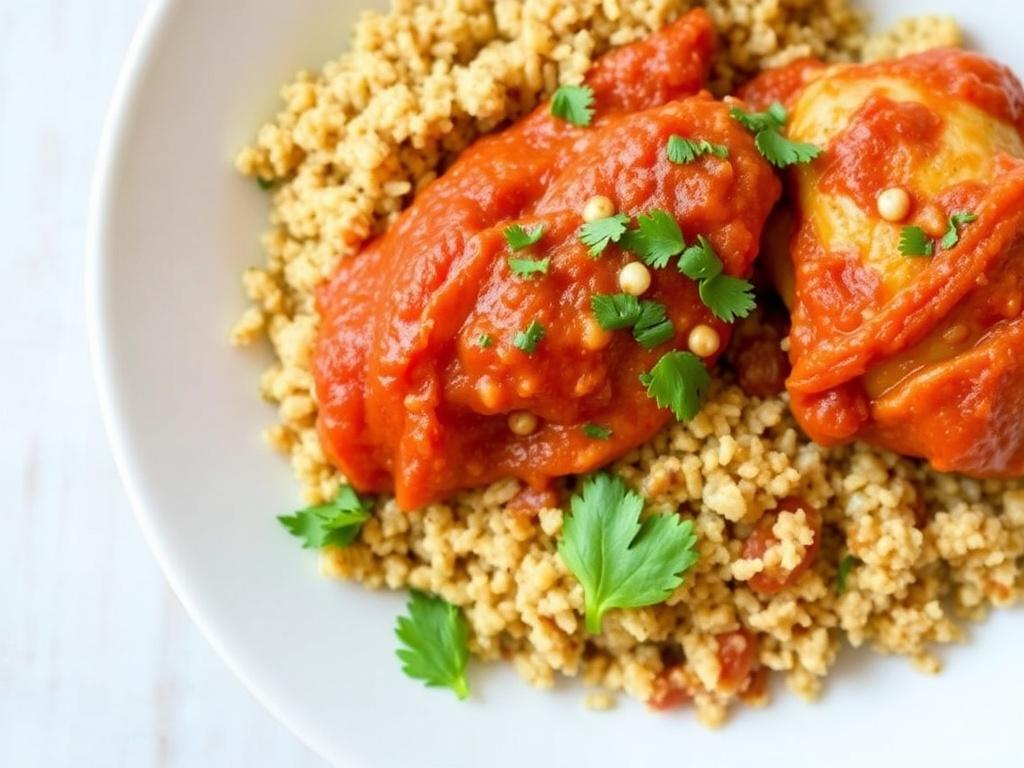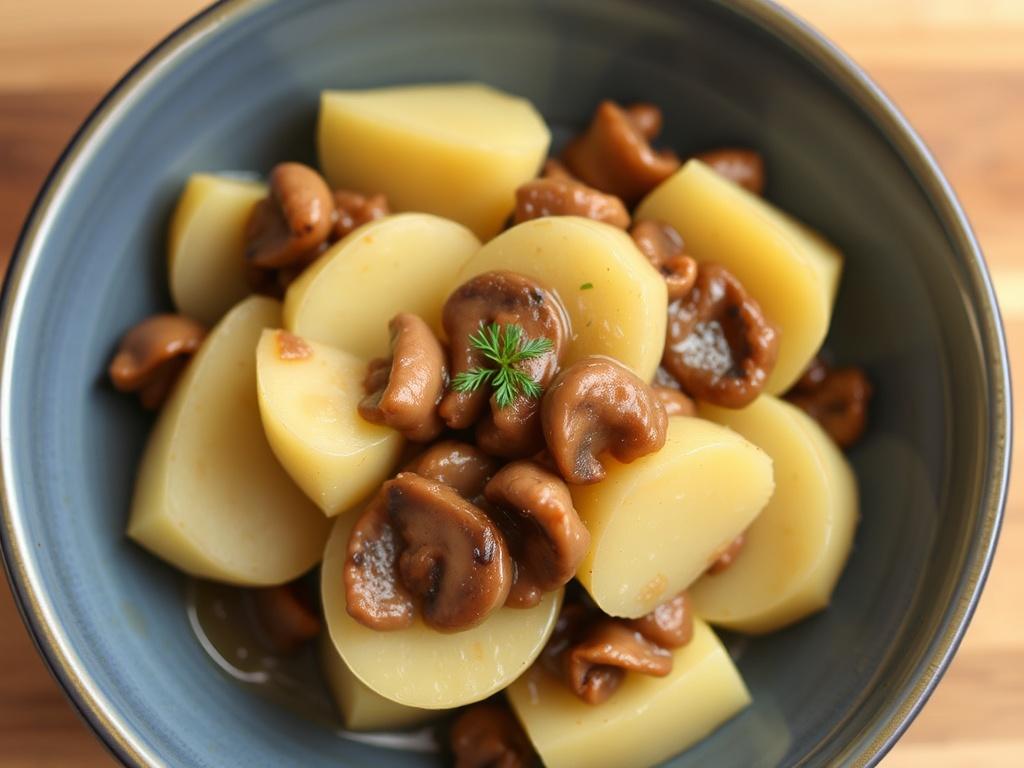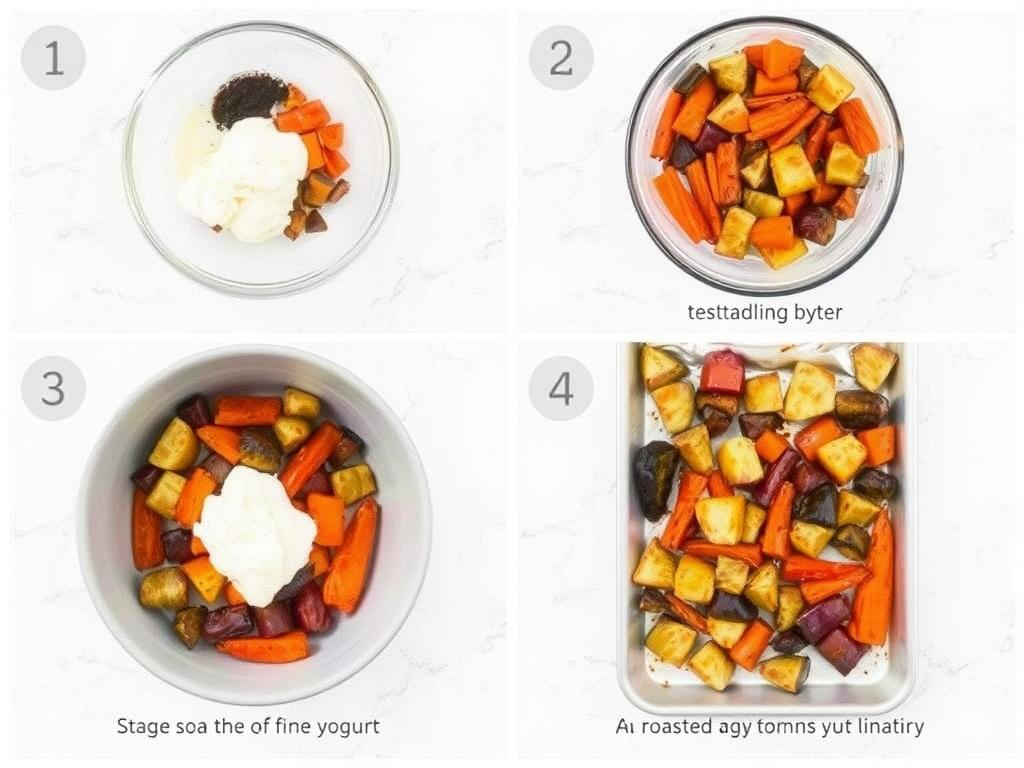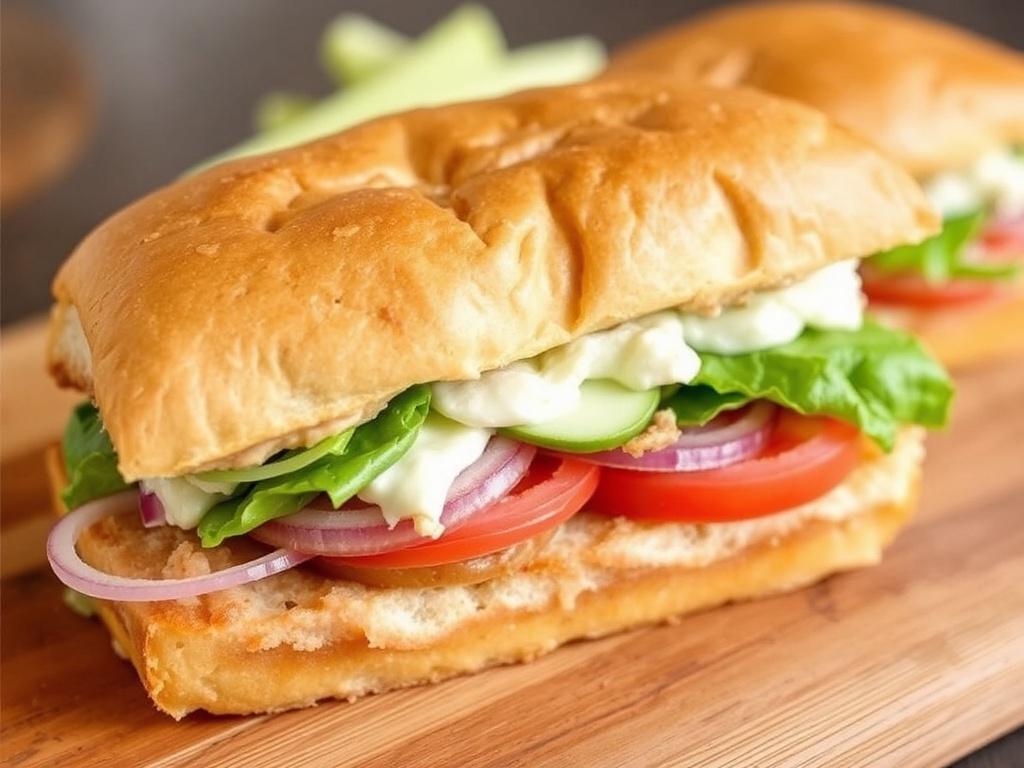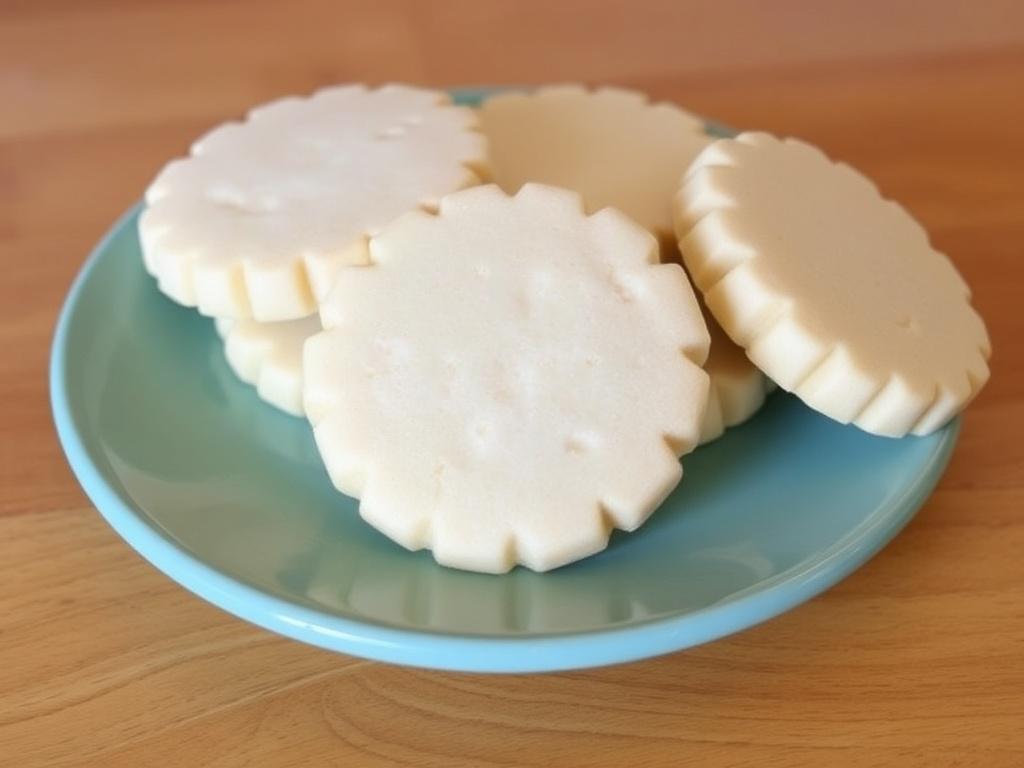Vegetable Fried Rice: The Colorful, Comforting One-Pan Meal You’ll Make Again and Again
There’s a special kind of comfort in a bowl of steaming rice tossed with bright vegetables, a glossy sauce, and the faint char from a hot pan. Vegetable Fried Rice sits at the intersection of thrift and pleasure: it rescues leftover rice, transforms modest produce into something celebratory, and arrives on the table fast enough for weeknights. In this article I’ll walk you through everything that turns a simple skillet dish into a repeatable favorite, from ingredient choices and technique to variations that suit every appetite. Expect practical tips you can use tonight, a clear recipe to follow, and a few ideas born from my own kitchen experiments. By the end you’ll know how to produce reliably good results and how to tweak the dish to make it your own.
Where this dish comes from and why it works
Stir-fried rice dishes have a long history across East and Southeast Asia, growing out of the need to use leftovers efficiently and introduce texture and heat to bland grains. The basic idea is elegantly simple: cold, dry rice fried quickly over high heat with a selection of vegetables and seasonings. That quick contact with a very hot surface caramelizes bits of starch and sugar, building aromas that raw rice or boiled rice lacks. The technique elevates humble staples into something with depth and movement on the palate. Understanding that foundation helps you focus on heat control, timing, and ingredient order, which are the true secrets of success.
One reason this recipe is beloved is its flexibility. It can be made entirely plant-based, or enriched with eggs, tofu, or shrimp; it suits low-effort weeknights and also scales up for a crowd. Texture plays a starring role: tender-crisp vegetables, separated grains that don’t clump, and occasional browned bits make each forkful interesting. Economically, it stretches small amounts of protein and uses seasonal produce without demanding exotic pantry items. In practice, that means you can create something delicious with what’s already in your refrigerator.
Core ingredients and why each matters
The three pillars of a successful bowl are rice, vegetables, and flavoring liquids. Each pillar has its own rules. Rice needs to be dry and cooled so grains remain separate when tossed in the pan; fresh, steamy rice tends to clump and steam rather than fry. Vegetables should be cut according to their cooking time: dense roots need longer, delicate greens only seconds. Sauce ingredients—soy sauce, sesame oil, oyster sauce or equivalents—must be added in judicious amounts to season without turning the dish salty or soggy. Treating every element deliberately yields a balanced result rather than a watery, overwhelmed stir-fry.
Fat and heat are equally important. A neutral oil with a high smoke point, such as vegetable or canola oil, allows you to push the pan hot enough to build color without burning the aromatics. A small late addition of toasted sesame oil supplies aroma rather than acting as the cooking medium. Eggs, when used, not only add protein but contribute silkiness and help coat grains when scrambled into the rice. Texture contrast—chewy rice, crisp vegetables, soft egg—keeps the dish lively and satisfying.
Choosing the right rice
Long-grain rice like jasmine is the classic choice for many stir-fried rice recipes because its individual grains tend to separate after cooking and chilling. Medium-grain rice can work too, but short-grain varieties often become sticky and gluey unless handled with exceptional care. Whatever rice you choose, cook it slightly underdone if you plan ahead, then spread it on a tray to cool quickly and refrigerate; the drier, cooler grains take on a better mouthfeel when fried. Using day-old rice is not a strict rule, but it does make the process more forgiving and the outcome superior.
If you find yourself with only freshly cooked rice, try rinsing it under cool water to remove excess surface starch, then spread it out to cool rapidly. Another option is to par-cook extra and freeze portions on a tray; frozen rice, thawed briefly, fries well because the freezing breaks up starch bonds and reduces stickiness. Ultimately, the aim is the same: grains that slip past one another in the pan rather than forming a compact mass.
Vegetables: which ones to use and how to prep them

The choice of plant ingredients defines the dish’s character. Classic combinations include carrots, peas, scallions, and bell peppers, but don’t feel limited. Broccoli florets, snap peas, thin-sliced cabbage, corn, mushrooms, and diced zucchini all bring useful textures and flavors. Aim for a mix of colors and cooking times so the final dish has visual appeal and each vegetable retains its identity. Cut everything into uniform sizes to ensure even cooking and an attractive bite.
Prep matters more than people realize. Slice sturdy vegetables thinly so they cook through quickly; cut mushrooms in quarters or thin strips; chop scallions and garlic finely to integrate them without burning. If you like a softer result, briefly blanch or microwave dense veg like broccoli before stir-frying. For a sharper crunch, toss raw vegetables straight into the wok at the beginning of the stir-fry. Learning how each vegetable reacts to heat lets you layer them in the pan with confidence.
- Quick-cook vegetables: scallions, bean sprouts, bell pepper, snow peas.
- Medium-cook vegetables: carrots (julienned), broccoli florets, green beans.
- Slow-cook or pre-cook: beets, dense root vegetables, whole sweet potato pieces.
Sauces, oils, and seasonings that lift the dish
Seasoning is where the dish moves from bland to memorable. Soy sauce provides saltiness and depth; a little dark soy or mushroom soy can deepen color and add umami without extra salt. Toasted sesame oil is powerful even in small doses—add it at the end for aroma rather than using it as the primary cooking fat. Rice vinegar, a touch of sugar, or a splash of Shaoxing wine can round the flavors and introduce a subtle acid-sweet balance.
For those avoiding soy, tamari or coconut aminos are good substitutes. Chili paste or flakes make the meal lively for spice lovers, and white pepper gives a delicate heat different from black pepper. Fresh aromatics—garlic, ginger, and scallions—should be treated carefully: add them early for fragrance that infuses the oil, or late for a bright, raw edge. A thoughtful blend of these components keeps the seasoning layered rather than one-dimensional.
Technique: wok basics and stir-frying principles
Heat control is the single most important skill for a good pan-fried rice. Preheat the wok or skillet until it is very hot, so contact with the pan immediately starts to color the food. Use a high smoke-point oil, add aromatic ingredients briefly to perfume the oil, and then work quickly. Frying in small batches prevents the pan from cooling down, which leads to steaming rather than browning. The goal is speed and agitation: toss or stir constantly so everything cooks evenly and acquires little toasted bits.
Order of operations matters. Cook any proteins first and set them aside, especially if they need browning. Next, start with denser vegetables and add more delicate items later. Rice is best added in clumps that you break apart with a spatula, letting each portion hit the hot surface so grains get a chance to toast. Finish by reincorporating proteins, tossing in sauces, and giving the mixture a quick final sear. This sequence keeps texture distinct and flavors concentrated without overcooking.
Tools help but don’t make you a cook. A heavy-bottomed wok or a large skillet that holds heat works well, and a wide spatula or flat turner lets you scrape and toss efficiently. If your pan is too small, the ingredients will steam and clump. A small splash of neutral oil between batches keeps the surface slick and prevents sticking. With practice, your wrist and timing will build a comfortable rhythm: a few minutes of intense focus produce a dish that looks and tastes like it took longer to prepare.
Step-by-step recipe: a reliable weeknight method
This recipe reflects what I use most often when I want something quick, colorful, and flexible. It serves two to three as a main or four as a side. You can double it for more servings, though I recommend cooking in slightly larger batches rather than crowding one pan. The instructions emphasize a straightforward sequence so even cooks who aren’t used to high-heat work can follow along and get consistent results.
Before you start, have everything chopped, measured, and within arm’s reach. Stir-frying moves quickly, so mise en place is not optional. If you like a little char, let the rice sit untouched for 20-30 seconds after adding it to the hot oiled pan to develop color before stirring. That pause produces those tasty brown bits that make the dish sing.
| Ingredient | Amount |
|---|---|
| Cooked jasmine rice (preferably chilled) | 3 cups |
| Neutral oil (vegetable or canola) | 2 tablespoons |
| Mixed vegetables (carrot, peas, bell pepper, scallions) | 2 cups total, chopped |
| Garlic, minced | 2 cloves |
| Ginger, minced (optional) | 1 teaspoon |
| Soy sauce | 1.5 tablespoons |
| Sesame oil | 1 teaspoon |
| Eggs (optional) | 2, beaten |
| Salt and pepper | To taste |
| Optional protein (tofu, shrimp, chicken) | 1 cup, pre-cooked |
Cooking method
Warm your wok or large skillet until it begins to shimmer, then add the neutral oil. Toss in garlic and ginger for a few seconds until fragrant; do not let them brown. Add vegetables in the order of their cooking times, starting with carrots and broccoli, then bell peppers and peas. Stir constantly so each piece picks up heat and color without burning. If you’re adding eggs, push the vegetables to the side and quickly scramble them in the open space, then combine with the vegetables.
Next, add rice in clumps and let each cluster kiss the pan briefly before spatulaing it apart and turning it through the vegetables. Pour the soy sauce around the edges of the pan so it hits the hot surface and reduces slightly before mixing in; this helps avoid soggy rice. Toss in any pre-cooked proteins, season with salt and pepper, and finish with a drizzle of sesame oil for brightness. Taste and adjust, then serve immediately while the grains are still slightly crisp and warm.
Variations to keep things interesting
One appealing aspect of this dish is how well it adapts. Swap jasmine for basmati for a drier, less sticky grain, or use brown rice for a nuttier flavor and more fiber. Add pineapple for a sweet contrast, or toss in kimchi for tang and a spicy kick. For a richer mouthfeel try a spoonful of butter stirred in at the end, or fold through small cubes of pan-fried tofu for a protein boost that soaks up flavors beautifully. Seasonal vegetables influence texture and aroma, so rotate what you use through the year.
If you want to focus on proteins, try a version with marinated tofu or thin-sliced beef. For a brunch-style twist, include a runny fried egg on top and a scattering of scallions and toasted sesame seeds. There’s also a trend of making “cauliflower rice” versions for lower-carb diets; while the texture will differ, the same principles—high heat, layered cooking, and finishing touches—still apply. Each variation invites a small tweak in timing or seasoning, but the backbone of the technique remains constant.
Vegan, vegetarian, and allergen-friendly swaps
Making the dish vegan is straightforward: omit eggs and use a plant-based protein like tempeh, firm tofu, or edamame for substance. Use tamari if gluten is a concern, and replace oyster sauce with a mushroom-based vegan oyster sauce or a little miso mixed with water for umami. For nut allergies, avoid sesame oil if it’s an issue; you can add aroma with a splash of toasted sunflower oil or a few drops of toasted coconut oil for a different character. Small changes to the sauce often make the biggest impact on accommodating dietary needs without losing depth.
Some readers worry about sodium. Lighten the load by using low-sodium soy sauce and brightening with a squeeze of lime or a splash of rice vinegar. Herbs like cilantro or basil at the end add freshness that fools the palate into perceiving more complexity even with reduced salt. Balancing umami, acid, and fat keeps the dish satisfying while respecting dietary constraints.
Make-ahead, leftovers, and freezing
This dish is ideally suited to meal prep. Cook a large batch of rice and chop vegetables in advance, storing components separately in airtight containers. When you’re ready to eat, a hot wok and a few minutes are all you need to bring everything together. Leftovers reheat well in a skillet with a little oil; avoid the microwave when possible because it can make rice gummy. When reheating, spread the rice thin in the pan and let it sit for short intervals to restore some toasted texture.
Freezing is also possible: cool food completely, portion into shallow containers, and freeze. Thaw in the refrigerator overnight and reheat in a pan until steam rises and the dish is hot throughout. Note that delicate vegetables like bell pepper and scallions will soften after freezing, so if texture matters, reserve those to add fresh at the time of reheating. Planning ahead in this way means you can have a homemade easy dinner on hand with minimal last-minute work.
Serving suggestions and pairing ideas
A bowl of savory fried grains pairs well with crisp, acidic sides that cut through richness. A simple cucumber salad dressed with rice vinegar and a pinch of sugar brightens the plate, and pickled vegetables provide a sharp counterpoint. For protein, lightly seared fish or soy-glazed tofu complement the flavors without overpowering them. A scattering of toasted sesame seeds or chopped herbs at the end adds visual contrast and a final layer of flavor.
Consider textures when you compose the rest of the meal. Something crunchy—like a quick slaw or toasted nuts—creates balance. For beverages, a crisp lager or a green tea works beautifully; the carbonation or tannins cleanse the palate between bites. Keeping contrasts in mind helps the rice remain the star while the accompaniments enhance rather than compete.
Troubleshooting common problems
If your rice turns out mushy, it’s usually due to excess moisture: either the rice was too freshly cooked, you added too much sauce, or the pan wasn’t hot enough and the ingredients steamed. Fixable approaches include reducing liquid in the sauce, letting components fry longer to evaporate moisture, or using a spatula to press clumps and let them toast. For sticky rice, try rinsing grains after cooking to remove surface starch or using slightly less water next time.
When vegetables are limp or overcooked, they were likely added too early or sliced too thinly for the heat level. Reset by blanching sturdy vegetables briefly and shock-cooling them in ice water before stir-frying, which preserves color and texture. If you face blandness, add a bright acid like rice vinegar or citrus at the end and a pat of butter or a drizzle of sesame oil to round the flavor. Small corrections often rescue a dish that seems only mild at first.
Nutrition, portions, and making it balanced
A typical serving of this dish provides a mix of carbohydrates, fiber from vegetables, and modest protein. You can adjust macronutrients easily: add more tofu, a couple of eggs, or diced chicken for protein; increase vegetable volume to boost fiber and reduce calorie density. Using brown rice raises fiber content but requires a little extra liquid and a longer initial cooking time. Portion sizes depend on appetite and whether the rice is a main course or a side, but a bowl of two to three cups cooked rice with vegetables and protein will generally satisfy most adults as a main.
For those tracking nutrients, soy sauce contributes sodium, so low-sodium versions are worth considering. Using more vegetables and less rice reduces calories per serving while increasing vitamins and minerals. Simple swaps—like swapping oil types or increasing legumes—allow you to customize the meal’s nutritional profile without losing taste. In my household, we often bulk up the veg to keep portions generous but light.
Final tips and a personal note
Over the years I’ve learned that the most reliable path to a great pan-fried rice is consistency in small details: uniformly cut vegetables, chilled rice, and a hot pan. These three habits turn a grab-bag of ingredients into something consistently delicious. I also recommend tasting as you go and making micro-adjustments; sometimes a scant teaspoon of sugar or a squeeze of lime at the end makes all the difference. Keep your pantry stocked with a few key sauces, and you’ll be able to improvise a satisfying meal whenever time is short.
When I teach friends, I emphasize confidence: don’t be afraid to let food sit on the pan for a few seconds to develop color, and don’t crowd the surface. Once you master the rhythm of high heat and quick turns, creating different versions becomes playful rather than stressful. The dish rewards experimentation—mix in what you love, scale flavors to suit your household, and treat it as both a weeknight workhorse and a canvas for culinary personality. Serve it hot, and enjoy the way simple ingredients can turn into a memorable meal.
